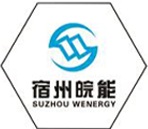
8 月 . 02, 2024 14:49
Back to list
Understanding the Functionality and Importance of Pressure Reducing Devices in Various Applications
Understanding Pressure Reducing Devices Principles and Applications
Pressure reducing devices play a critical role in various industrial and domestic settings by managing and maintaining the desired pressure of gases and liquids within a system. These devices are essential in ensuring safety, efficiency, and functionality across many applications, from household plumbing to large-scale industrial processes.
What is a Pressure Reducing Device?
A pressure reducing device, often referred to as a pressure regulator or pressure reducing valve (PRV), is designed to lower the input pressure of a fluid to a predetermined output pressure. This is crucial in systems where excessive pressure can lead to damage, inefficiency, or safety hazards. These devices take the high-pressure fluid from the source and reduce it to a lower level that is safe and suitable for use in downstream applications.
How Do Pressure Reducing Devices Work?
The operation of pressure reducing devices is based on the principle of mechanical regulation involving a spring-loaded diaphragm or piston. When the high-pressure fluid enters the device, it acts against the diaphragm, which moves according to the pressure exerted. The position of the diaphragm adjusts a valve opening, allowing just the right amount of fluid to flow through to maintain a consistent output pressure.
The set pressure on the device can usually be adjusted, allowing operators to tailor the output pressure to fit specific requirements. Common types of pressure reducing devices include spring-loaded regulators, electronic pressure regulators, and back-pressure regulators, each suited for different applications and environments.
Applications of Pressure Reducing Devices
1. Residential Plumbing In home plumbing systems, pressure reducing valves are essential for maintaining safe water pressure. Municipal water supplies can often have pressures that are too high for standard plumbing fixtures, potentially causing leaks or bursts. A PRV ensures that the output pressure remains within safe limits.
pressure reducing device

2. Industrial Processes In manufacturing and chemical processing, maintaining proper pressure is crucial. Pressure reducing devices help control the pressure of gases and liquids used in various processes, reducing the risk of equipment failure and ensuring optimal performance.
3. Gas Supply Systems In natural gas pipelines, pressure reducing stations are necessary to lower the pressure of the gas before it reaches consumers. This not only ensures safety but also facilitates accurate metering and distribution of gas.
4. HVAC Systems In heating, ventilation, and air conditioning systems, pressure control devices help manage the pressure of refrigerants and air, contributing to energy efficiency and system longevity.
Benefits of Using Pressure Reducing Devices
Using pressure reducing devices in various systems offers numerous benefits
- Safety By regulating pressure, these devices prevent overpressure situations that could lead to equipment failure or dangerous leaks. - System Longevity By maintaining optimal pressure levels, pressure reducing devices help prolong the life of various components within a system, reducing maintenance and replacement costs. - Efficiency They enable systems to operate at maximum efficiency, reducing energy consumption and improving overall performance.
- Consistency Regulators ensure that output pressure remains stable, which is essential for processes that require precise pressure control.
Conclusion
Pressure reducing devices are fundamental components in a myriad of applications, ensuring safe, efficient, and reliable operation of various systems. Their ability to regulate and stabilize pressure makes them indispensable in both residential and industrial contexts. With ongoing advancements in technology, the efficiency and reliability of these devices continue to improve, paving the way for safer and more efficient fluid management in the future.
Latest news
-
Unlocking The Quality Gas Pressure ReducersNewsNov.01,2024
-
The Role of Gas Pressure Reducing StationsNewsNov.01,2024
-
The Importance and Functionality of Safety Relief ValvesNewsNov.01,2024
-
The Essential Role of Safety Valves in Natural Gas ApplicationsNewsNov.01,2024
-
The Essential Role of Gas Pressure RegulatorsNewsNov.01,2024
-
Enhance Your Premium Gas FiltersNewsNov.01,2024

